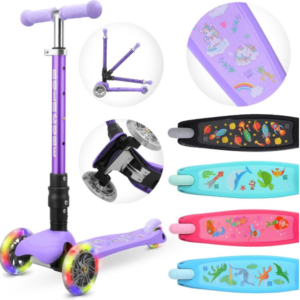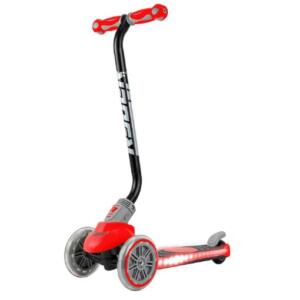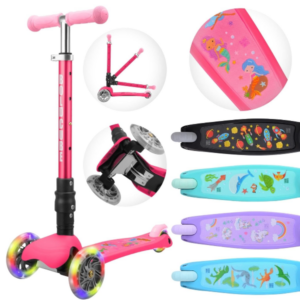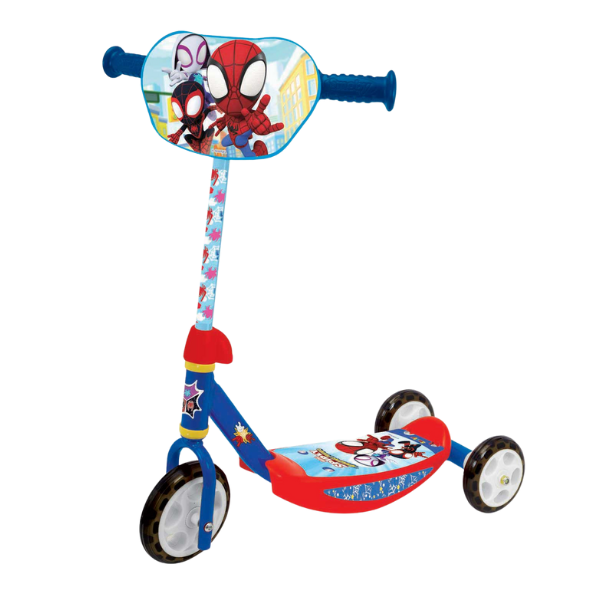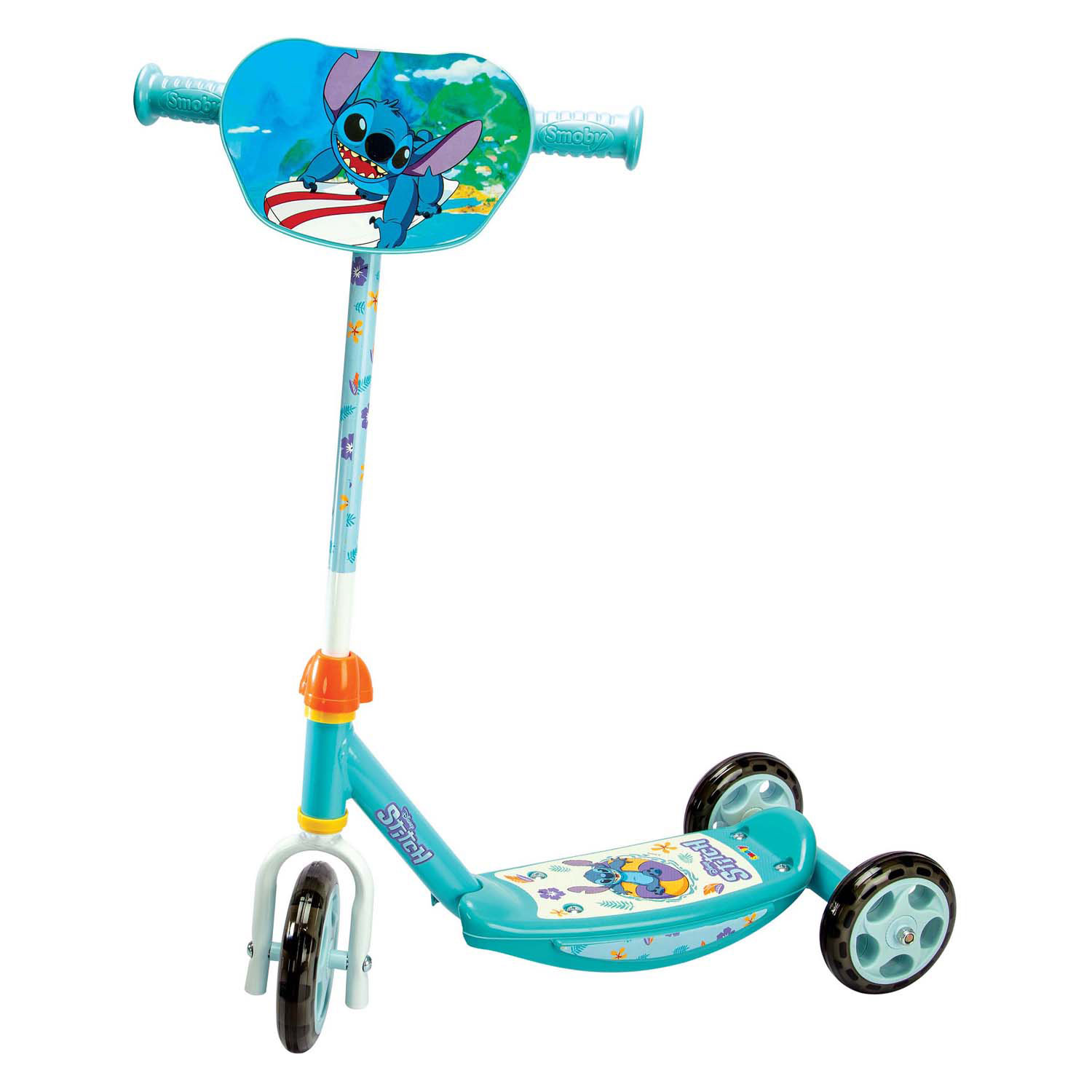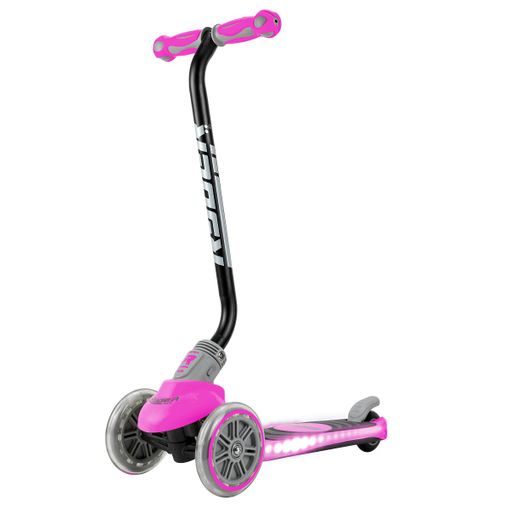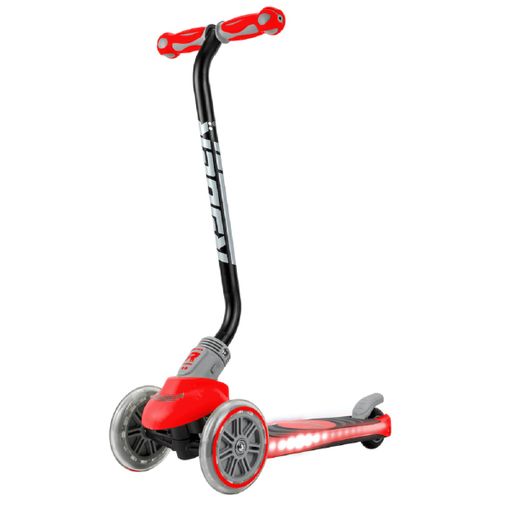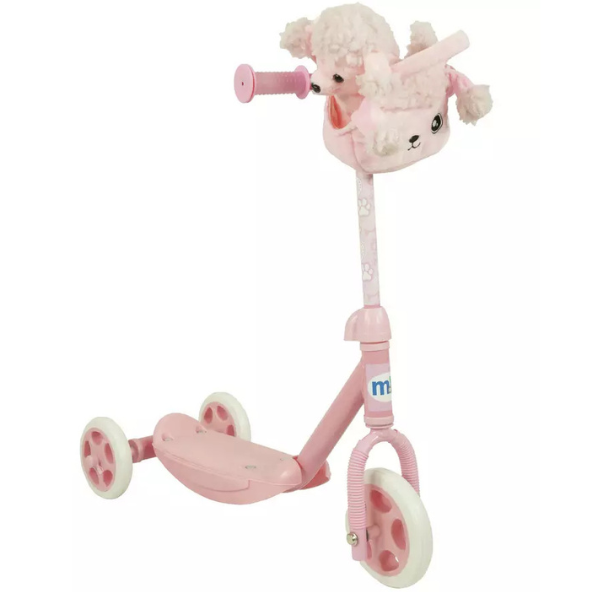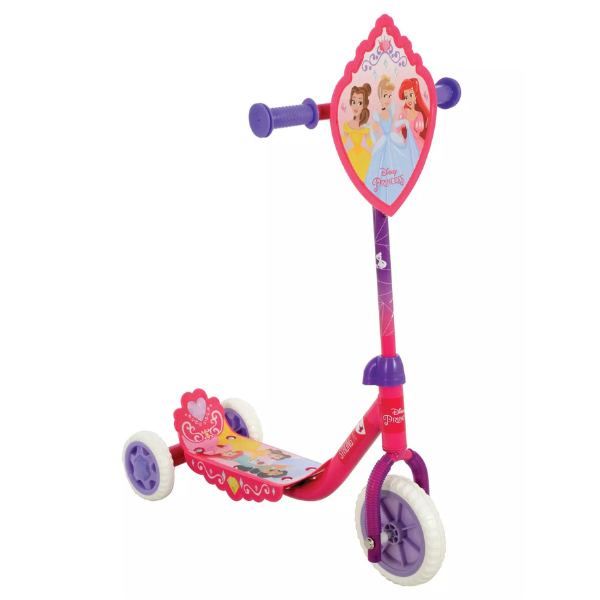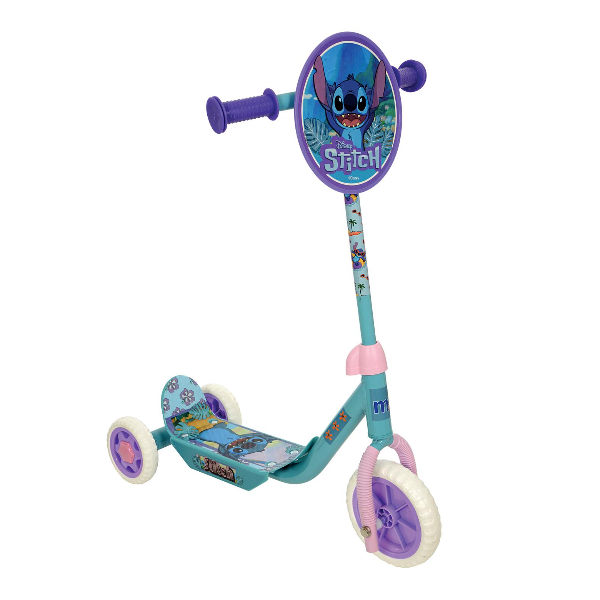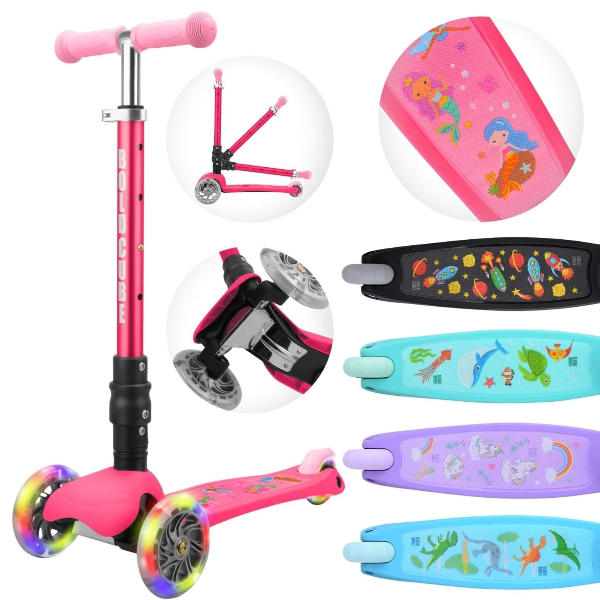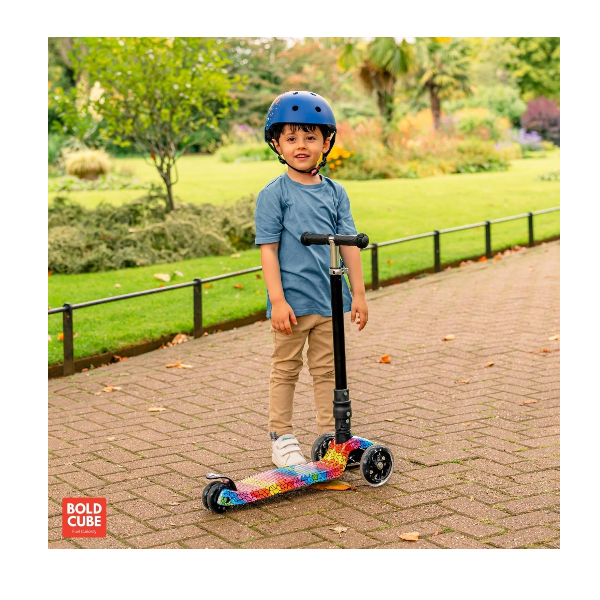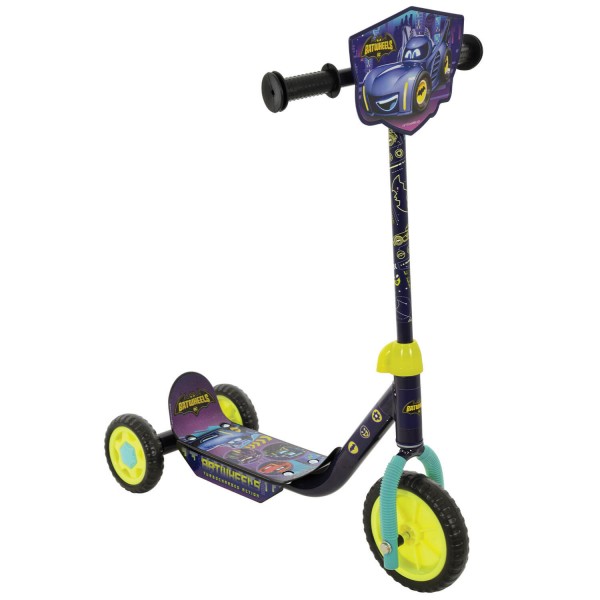Frequently asked questions
My little one is itching for a scooter – how young is too young, or just right?
- 3-wheeled scooters (with two wheels at the front for stability): These are fantastic for toddlers as young as 18 months to 2 years old. They offer a stable base, helping children build balance and coordination without the added pressure of steering a two-wheeler. Look for models with a low deck and adjustable handlebars.
- 2-wheeled scooters: While some agile 3-year-olds might manage, the sweet spot for learning a traditional two-wheeled scooter is usually around 4-5 years old. This is when their balance, gross motor skills, and decision-making are developed enough to confidently handle the challenge.
Two wheels or three? What's the real difference for a child?
This is about stability versus skill development.
- Three-wheeled (often “lean-to-steer”): Offers superior stability, which builds confidence in younger riders. The “lean-to-steer” mechanism (where the child shifts their weight to turn) intuitively helps develop balance and core strength. It’s a great stepping stone to other wheeled activities.
- Two-wheeled: Demands more balance, coordination, and agility. It’s faster and more manoeuvrable, offering a greater sense of speed and independence. It helps hone advanced motor skills and prepares them for bikes without training wheels.
Safety first! What essential gear does my kid really need?
- Helmet: A well-fitting, CPSC-certified helmet is paramount. Ensure it sits level on their head, covers the forehead, and the straps are snug. No helmet, no scooting!
- Knee and Elbow Pads: Falls happen, especially when learning. Pads protect joints from scrapes, bruises, and more serious injuries.
- Wrist Guards: These are often overlooked but incredibly helpful, as children instinctively try to break falls with their hands.
- Closed-toe shoes: To prevent toes from getting stubbed or caught under the wheels, and to offer good grip for pushing off and braking.



